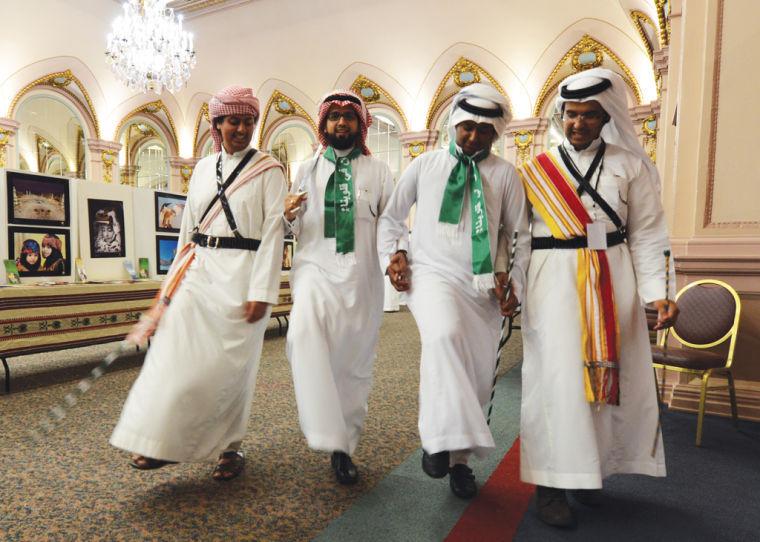Saudis celebrate national holiday in student union
October 7, 2013
The audience cheered and whistled as dancers took to the stage and performed traditional dances to represent different regions in Saudi Arabia. The performers wore flowing traditional robes and colorful head scarves.
The men artfully wielded swords and wooden sticks as they danced in patterns across the stage while the crowds clapped in rhythm with their routines.
The dance was part of Monday’s celebration of the 83rd annual Saudi National Day, which marks the date that Saudi Arabia became a unified nation. Members of Pittsburgh’s Saudi community and the general public celebrated the holiday in the William Pitt Union from 5 to 9 p.m.
The Saudi Student House in Pittsburgh, an organization for Saudi students at local universities and colleges that is also affectionately known as the Saudi House, organized the celebration. More than 500 people, including students and members of the Pittsburgh community, Saudi and otherwise, attended. At the beginning of the evening, the audience watched folk dances, live skits and videos about Saudi hospitality in the Assembly Room.
According to the Saudi Arabian Ministry of Higher Education’s website, the Saudi government has sent more than 70,000 students to study in the United States since 2005. The same program has sent more than 75,000 Saudi students to colleges and universities in other countries.
Performers in several of the evening’s skits poked gentle fun at some of the cultural misunderstandings that Saudis, who tend to be observant Muslims, run into when they travel in the United States. The subject matter of the skits included information about Muslim prayer practices.
In one skit, a Saudi student tells his friend that he is going to take some time to pray. As he proceeds to pray on the street, an American keeps trying to get his attention to ask for directions to the Apple store. When the student, who is still praying, does not respond, the American wonders aloud why the Saudi man is behaving “weird” before another Saudi student arrives and explains that his friend was praying.
After the performances, guests moved to the Ballroom to get Henna tattoos, have their names written in Arabic or have their pictures taken in an authentic Saudi Arabian tent while posing in bright white Saudi garb. There was also an exhibit featuring Saudi artwork and photography. Organizers also served dinner consisting of savory grilled meat, sauteed vegetables and fluffy rice in the Kurtzman Room.
Saud Alsubaie, president of Saudi Student House, said that Saudi National Day is normally celebrated on Sept. 23. But because of reservation issues, Saudi House scheduled their celebration for Monday, instead.
Alsubaie, a Ph.D. student in Pitt’s physical therapy program, said that he was very happy with the number of people who attended the event.
Moaaz Alwagdani, a freshman at La Roche College and a member of the Saudi House, said that the Saudi government encourages students who study abroad to act as ambassadors to the outside world.
“Our government, they call it the Saudi Arabian Cultural Mission, and they take care of us and send us to create events and to share with people what we have in Saudi Arabia,” Alwagdani said.
Alsubaie also said that everything at the event had been provided by the Saudi Arabian Government through the Saudi Arabian Cultural Mission.
Ahmed Shaker, a sophomore at Point Park, participated in the folk dance known as Mizmar. The dance is native to the Hejaz region, which is located on the coast of the Red Sea.
“It’s a traditional dance for our specific region. Someone who lives in a different region would not know this dance,” said Shaker.
Shaker said that Saudis perform dances during special events and Muslim holidays, specifically Ramadan, the Muslim holy month, and Eid al-Fitr, which marks the end of Ramadan.
Zyare Medinah, a sophomore at the Community College of Allegheny County and a Muslim American, spoke about some of the assumptions that she has noticed people make about those who practice her religion. She also said that she thinks these prejudices can change.
“I think after 9/11, a lot of Americans look[ed] at Muslims in a bad way,” she said. “But the more you learn about them, the more you’ll see that they’re peaceful people.”



